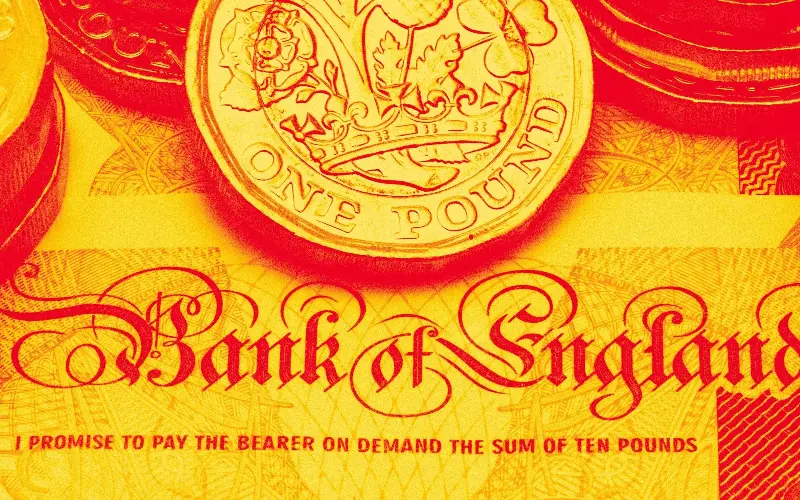
On Rob Davies’ dairy and arable farm in Herefordshire, Britain’s third heatwave in four weeks – following a wet winter – is taking its toll.
“Grass is a very important crop for us, and our grass yields currently are down by about 50pc,” the third generation farmer says.
“Maize is also looking to be around 50pc down.”
The low yields mean there is less work like baling hay for contractors. It also mean lower profits, as fixed costs stay the same.
“The impact across the wider economy could be quite profound,” Davies says.
His struggles with maize and grass are only one example of the many ways hotter temperatures are affecting Britain’s economy.
In towns and cities the impact is also being felt. Visits to the shops decreased by 1.8pc last month, with Helen Dickinson, chief executive of the British Retail Consortium (BRC), blaming the “extreme weather [that] meant shoppers stayed away from their local stores last month”.
England experienced its warmest June on record. Across the UK, temperatures had only once been higher since 1884.
While sunny days are welcomed by many, they pose problems for Britain’s already sluggish economy.
“The increasing heat and heatwaves are definitely going to make it yet more challenging to achieve economic growth,” says Elizabeth Robinson, a professor at the London School of Economics.
“The UK is not well adapted to the kind of weather we’re experiencing now.
“We haven’t caught up with the fact that we’re now living in a pretty hot country. A country that feels more like a Mediterranean country might have done 10 or 20 years ago.
“Our homes are not designed for the heat. So many of us are really struggling to sleep during the hot weather. Our transport infrastructure is also not designed for this kind of weather. So it’s harder to get to work, and it’s harder to function when you’re at work.”
Heatwaves to become more common
The Office for National Statistics estimates that from 1998 to 2021, hot days on average cost the economy £1.2bn a year by lowering productivity relative to if air conditioning and other adaptions were more common.
Such economic losses will increase as heatwaves become more common, according to James Porter, a senior lecturer at King’s College London.
“The thing to remember is that we had a heatwave in 2003 and then for about 15 years we didn’t have many hot days that would be classified as a heatwave. The last five years have been the hottest five years.
“So while that [£1.2bn average] figure is spread over nearly 20 years, it actually probably represents more of what’s happening now. There are significant losses attached to heat waves.”
Workers tend to become less productive in the heat. Those who work outside need to take frequent breaks or even cancel jobs if it becomes too hot. The risk of injury also rises.
This impacts the workers Chris Spinks employs at Westcotec, who each day go out on the roads to install and maintain traffic systems.
“A lot of our products are black. So if they’re out preparing or maintaining the equipment, then it can be really hot to touch if it’s in the afternoon and it’s been exposed to the sun,” Spinks says.
“It takes longer to complete jobs because people are taking more breaks in terms of taking on water, having time in the shade or sitting in the van with the aircon on to cool down.”
The tarmac on the roads can literally melt in extremely high temperatures, disrupting transport and racking up costs. Around the start of July, Central Bedfordshire Council had to grit roads to protect the hot tarmac.
Train cancellations also surge as signals fail and steel rails bend or kink from the heat. Air temperatures of 30°C mean rails in the sun can reach 50°C. Those unfortunate enough to brave the London Underground face temperatures that can be 5°C hotter than at street level.
People also tend to shy away from city centres in the heat.
When temperatures in the UK breached 40 degrees for the first time in July 2022, footfall fell by a quarter in just a month. Similarly, data from the British Retail Consortium shows that high streets across the UK suffered a 3pc drop in visitors in June, compared with a year earlier.
“People may not go in and do shopping, so that can affect a whole range of retailers - not just things like clothing but food as well,” says Porter.
Such changes to behaviour can be problematic for retailers.
Greggs last month issued a profit warning, blaming hot weather for lower demand for sausages rolls and other baked goods. Its shares plunged 15pc in response to the news. Doc Martens two years ago similarly blamed “unseasonably warm weather” for disappointing sales.
While large companies can weather such knocks, Britain’s small businesses owners are less prepared. Many are worried about how to cope with the third heatwave this summer, which is currently gripping the country. Temperatures are set to hit 34 degrees this weekend.
Phil Rusted, who owns Practical Plants on the Norfolk-Suffolk border, is working around the clock to keep his products alive. He trades plants from Europe and has a small plant nursery.
“When it’s hot like this, I’m working seven days a week for nothing because the business has slowed down, but the workload has increased.
“Turnover has reduced 30pc because of the heat. Probably 10pc of stock is lost or damaged beyond repair,” Rusted says wearily.
The hot weather has a “massive impact” on the business, he adds. People stop buying, and the plants and trees arrive in far worse shape after being transported from the continent in lorries.
“What we’ve noticed more over the last few years with the weather patterns is that suddenly you come into work and there’s no inquiries and no sales.
“All we can do is lay staff off and bring them back when we can. I laid two people off this week. And I am probably going to lay someone else off next week until September,” Rusted adds.
Other small business owners share his pain.
Charlotte Giddings runs online and wholesale bakery Brownie and the Bean in Redgrave, Suffolk. She is starting to get nervous about business grinding to a halt because of the sunny weather.
“It massively impacts us. It’s not just that people aren’t buying online cakes. Even our wholesale is quite dramatically affected. When it’s this hot as it is today, the last thing that people are thinking about is chocolate and cake,” she says.
“We’ve had a few markets recently and some pop-ups where we didn’t even cover our petrol costs. Wherever we can, we are trying to cut staff hours.
“It hasn’t been as bad as this for five years.”
Like Rusted, her turnover has taken a 30pc knock. Giddings hopes it is just one bad summer. Yet she may be out of luck.
Analysis by the Met Office published last month concluded the likelihood of temperatures hitting 40C has almost trebled since the year 2000, with a 50/50 chance of this level being reached again in the next 12 years.
Low growth and high inflation
Economists across Europe are increasingly worried about the cumulative impact from hot weather on the economy.
Frank Elderson, from the European Central Bank Executive Board, last week said that growth may be lower and inflation higher as a result of more frequent heatwaves.
“If you think about the exceptionally hot summer of 2022, food-price inflation was up between 0.4 and 0.9 percentage points. There was quite a measurable hit on German GDP,” the rate-setter warned.
Back in Herefordshire on Rob Davies’ farm, he is trying to figure out how to cope with the increasingly strange weather patterns. Heat is just the start of his problems.
“When it starts to rain, it seems to forget how to stop, and when it stops raining, it seems to forget how to start.”
